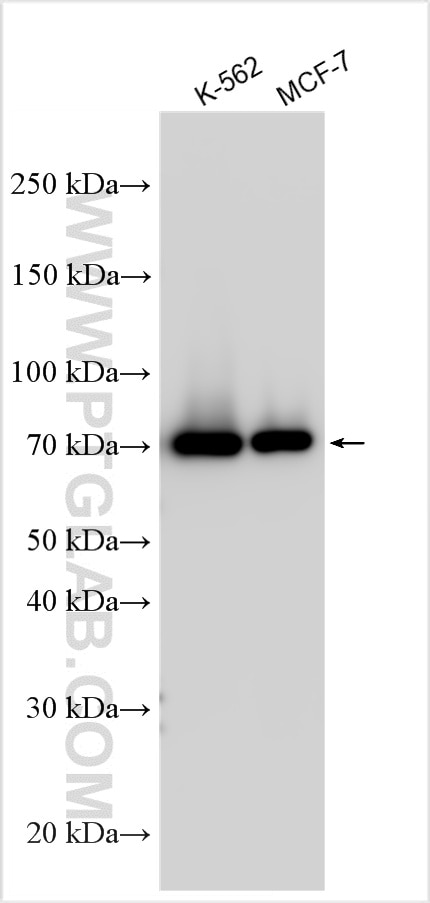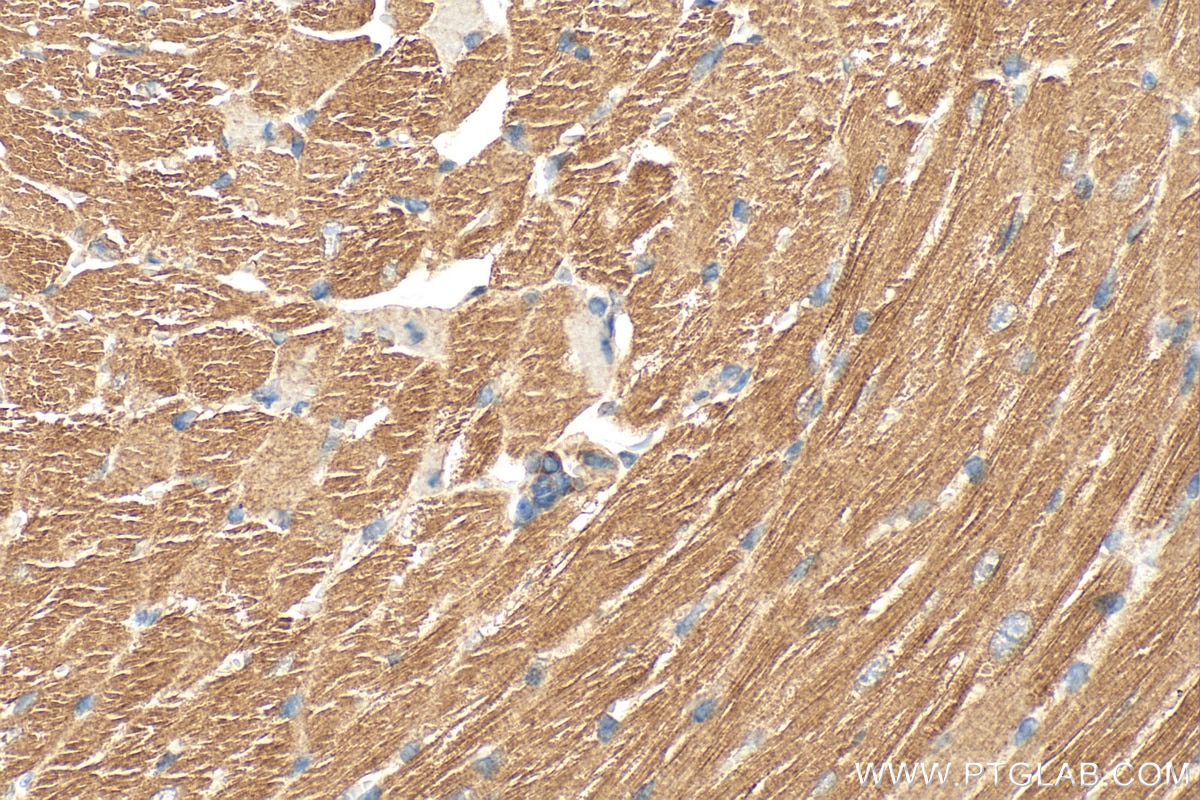Anticorps Polyclonal de lapin anti-RIPK1
RIPK1 Polyclonal Antibody for WB, IHC, ELISA
Hôte / Isotype
Lapin / IgG
Réactivité testée
Humain et plus (1)
Applications
WB, IHC, ELISA
Conjugaison
Non conjugué
N° de cat : 29932-1-AP
Synonymes
Galerie de données de validation
Applications testées
| Résultats positifs en WB | cellules K-562, cellules MCF-7 |
| Résultats positifs en IHC | tissu cardiaque de souris, il est suggéré de démasquer l'antigène avec un tampon de TE buffer pH 9.0; (*) À défaut, 'le démasquage de l'antigène peut être 'effectué avec un tampon citrate pH 6,0. |
Dilution recommandée
| Application | Dilution |
|---|---|
| Western Blot (WB) | WB : 1:1000-1:8000 |
| Immunohistochimie (IHC) | IHC : 1:200-1:800 |
| It is recommended that this reagent should be titrated in each testing system to obtain optimal results. | |
| Sample-dependent, check data in validation data gallery | |
Applications publiées
| WB | See 8 publications below |
| IF | See 1 publications below |
| CoIP | See 1 publications below |
Informations sur le produit
29932-1-AP cible RIPK1 dans les applications de WB, IHC, ELISA et montre une réactivité avec des échantillons Humain
| Réactivité | Humain |
| Réactivité citée | Humain, porc |
| Hôte / Isotype | Lapin / IgG |
| Clonalité | Polyclonal |
| Type | Anticorps |
| Immunogène | RIPK1 Protéine recombinante Ag31950 |
| Nom complet | receptor (TNFRSF)-interacting serine-threonine kinase 1 |
| Masse moléculaire calculée | 76KD |
| Poids moléculaire observé | 70-80 kDa |
| Numéro d’acquisition GenBank | NM_003804 |
| Symbole du gène | RIPK1 |
| Identification du gène (NCBI) | 8737 |
| Conjugaison | Non conjugué |
| Forme | Liquide |
| Méthode de purification | Purification par affinité contre l'antigène |
| Tampon de stockage | PBS with 0.02% sodium azide and 50% glycerol |
| Conditions de stockage | Stocker à -20°C. Stable pendant un an après l'expédition. L'aliquotage n'est pas nécessaire pour le stockage à -20oC Les 20ul contiennent 0,1% de BSA. |
Informations générales
RIPK1(Receptor-interacting serine/threonine-protein kinase 1) is primarily involved in mediating TNF-R1-induced cell activation, apoptosis, and necroptosis and belongs to a novel class of kinases that function in cell survival and cell death mechanisms(PMID:22685397 ). It has 2 isoforms produced by alternative splicing. It also can exist as a protein with a lower molecular weight of about 25 kDa and 45 kDa in HAEC and HUVEC(PMID:22685397).
Protocole
| Product Specific Protocols | |
|---|---|
| WB protocol for RIPK1 antibody 29932-1-AP | Download protocol |
| IHC protocol for RIPK1 antibody 29932-1-AP | Download protocol |
| Standard Protocols | |
|---|---|
| Click here to view our Standard Protocols |
Publications
| Species | Application | Title |
|---|---|---|
J Ethnopharmacol The protective role of Cordyceps cicadae and its active ingredient Myriocin against sodium iodate-induced age-related macular degeneration via an anti-necroptotic TNF-RIPK1/3 pathway | ||
Biomaterials Radiation-triggerable bioreactors enable bioenergetic reprograming of cancer stem cell plasticity via targeted arginine metabolism disruption for augmented radio-immunotherapy | ||
Microbiome Faecalibacterium prausnitzii-derived outer membrane vesicles reprogram gut microbiota metabolism to alleviate Porcine Epidemic Diarrhea Virus infection | ||
Heliyon Identification of colon adenocarcinoma necroptosis subtypes and tumor antigens for the development of mRNA vaccines |



